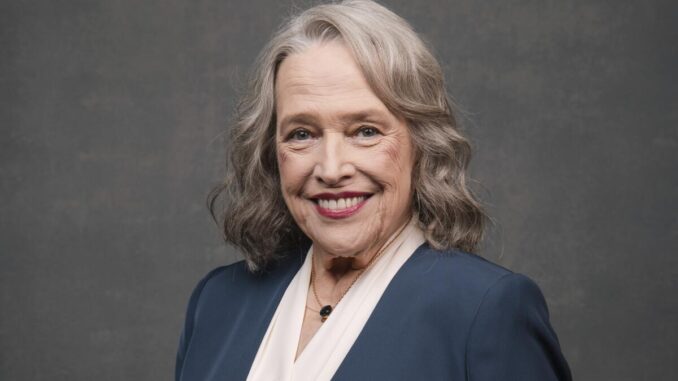
The Unseen Burdens: Kathy Bates, Lymphedema, and the Clarion Call for Awareness
Kathy Bates, a titan of the silver screen, has graced our lives with an unforgettable parade of characters – from the chilling Annie Wilkes to the wise-cracking Molly Brown. Her powerful presence, her unmistakable voice, and her fierce spirit are legendary. Yet, behind the scenes, away from the spotlight, Bates has been fighting a different, less celebrated battle: a chronic, often debilitating condition known as lymphedema. Her courage in speaking out about living with this illness has not only brought a much-needed face to an often-invisible disease but has also issued a clarion call for awareness that resonates deeply with countless sufferers worldwide.
Lymphedema is a condition characterized by swelling, typically in an arm or a leg, caused by a compromised lymphatic system. For Bates, it was a cruel aftershock of her breast cancer treatment in 2012, specifically the removal of lymph nodes, which disrupted the delicate drainage network in her body. She recounted waking up from surgery with the unsettling heaviness, the feeling of her arms being “two giant pork roasts.” This visceral description is a window into the daily reality for millions. It’s not just a minor swelling; it’s a throbbing ache, an unyielding pressure, a limb that feels foreign and cumbersome, making simple tasks – lifting a grocery bag, tying a shoelace, even waving hello – a monumental effort.
Bates’s decision to share her struggle was transformative. For too long, lymphedema has been a whispered ailment, a source of shame and isolation. Many patients feel disfigured, self-conscious about their enlarged limbs, and misunderstood by a medical community often ill-equipped to diagnose or treat it effectively. Bates, with her characteristic unflinching honesty, shattered that veil of silence. She spoke of her initial embarrassment, her fear of being seen with swollen limbs, and then her defiant resolve to not let it dictate her life. “I got on Twitter and I said, ‘It’s lymphedema, and I got it from the mastectomy.’ I was able to get on with my life and not be afraid.” This act of public declaration was more than just personal catharsis; it was a beacon of hope, a validation for others who had been suffering in silence.
Living with lymphedema is a relentless regimen. It involves daily manual lymphatic drainage (MLD), where trained therapists or patients themselves gently massage the limb to encourage fluid movement. It means wearing tight compression garments – a second skin that can be hot, uncomfortable, and challenging to put on – for most of the day, every day, to prevent further fluid buildup. It requires specialized exercise and vigilant skin care to prevent infections like cellulitis, which can rapidly escalate and further damage the lymphatic system. Bates has openly discussed these rituals, demonstrating how an illness can infiltrate and redefine one’s entire existence, turning daily routines into a battle for management and comfort. Her candidness illustrates that even for a Hollywood star, there’s no magic wand; it’s a constant, disciplined fight.
The “needed awareness” Bates champions is multifaceted and urgent. Firstly, there’s a desperate need within the medical community. Many doctors, particularly those outside of specialized fields, lack sufficient education on lymphedema. This leads to misdiagnosis, delayed diagnosis, or a dismissal of symptoms, often telling patients, “It’s just swelling, elevate your limb.” Yet, early detection and intervention are critical to managing the condition and preventing its progression. Without proper care, lymphedema can become severely debilitating, affecting mobility, quality of life, and leading to recurrent infections.
Secondly, public awareness is vital to destigmatize the condition. When Bates speaks, she isn’t just speaking to doctors; she’s speaking to the public who might gaze at an enlarged limb with curiosity or judgment, unaware of the underlying struggle. Awareness fosters empathy and understanding, helping patients feel less isolated and more supported. It also encourages research and funding for better treatments, and perhaps one day, a cure. Bates, as the national spokesperson for the Lymphatic Education & Research Network (LE&RN), has leveraged her platform to advocate for these very causes, turning her personal pain into a powerful engine for collective progress.
Kathy Bates’s journey with lymphedema is a potent illustration of resilience and advocacy. Her willingness to lay bare her vulnerabilities has not diminished her formidable presence; it has amplified it, adding another layer of depth to her enduring legacy. By sharing her story, she transforms an often-hidden struggle into a public conversation, reminding us that true strength lies not just in enduring but in speaking out, educating, and fighting for a world where every unseen burden is acknowledged, understood, and met with compassionate care. Her voice is not just her own; it is the voice of millions calling for awareness, understanding, and hope.
